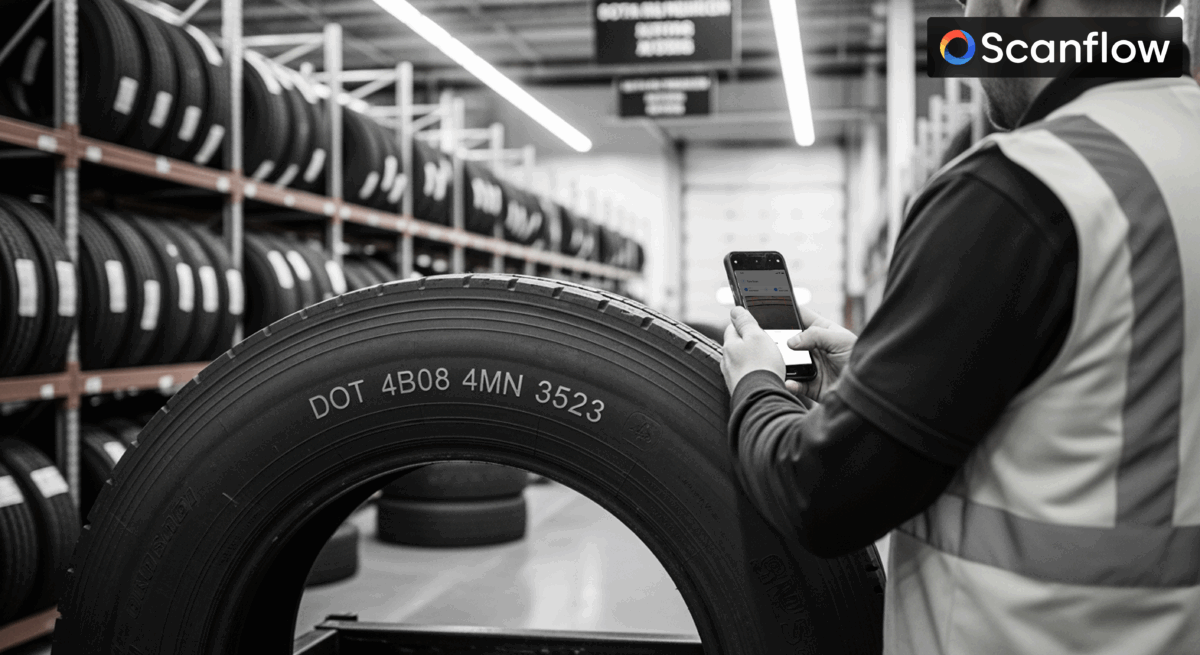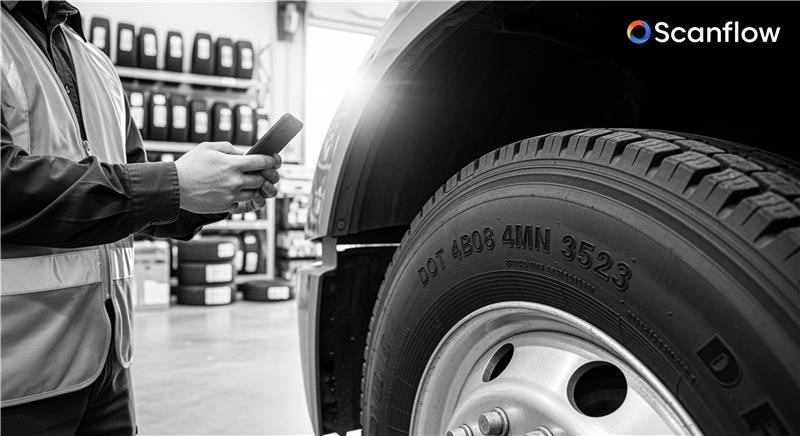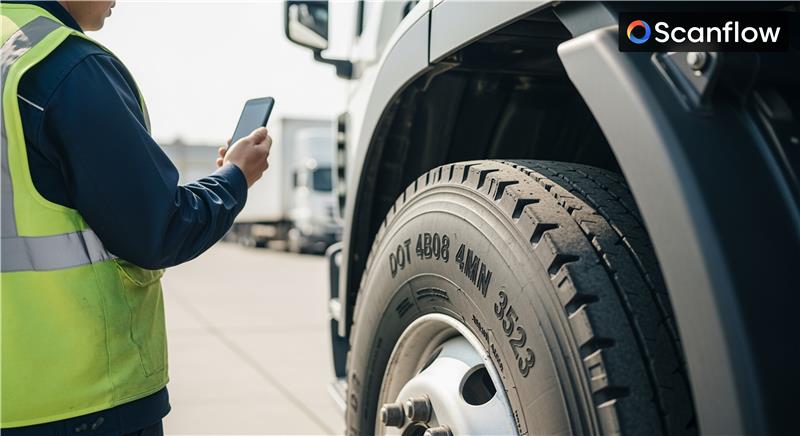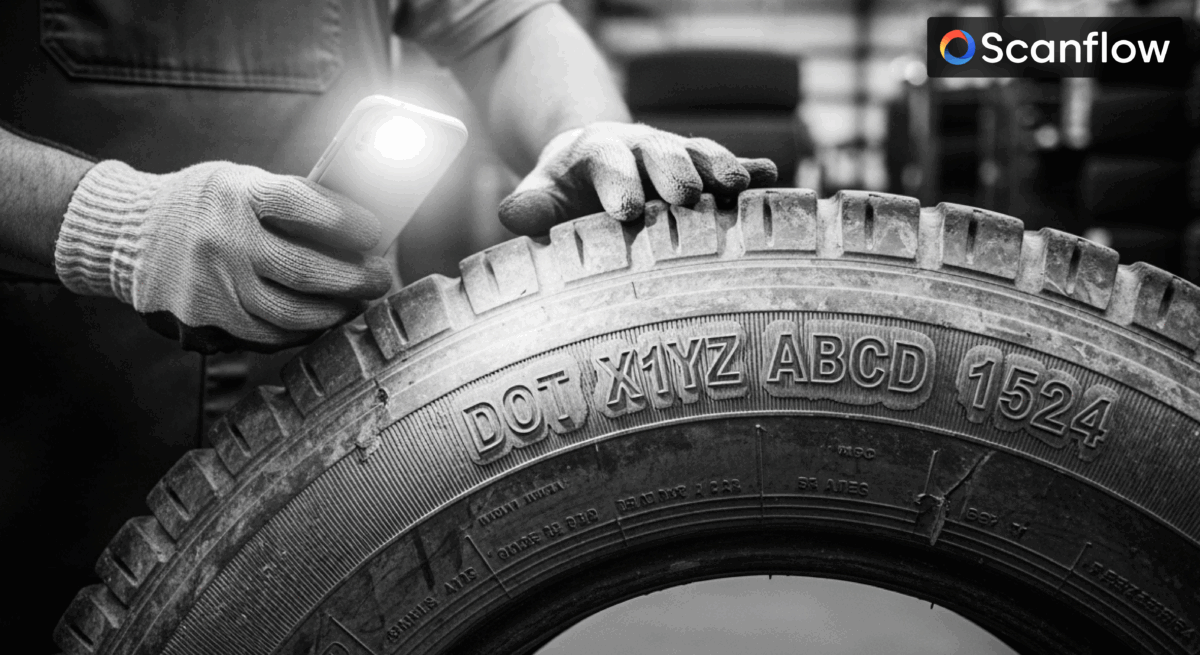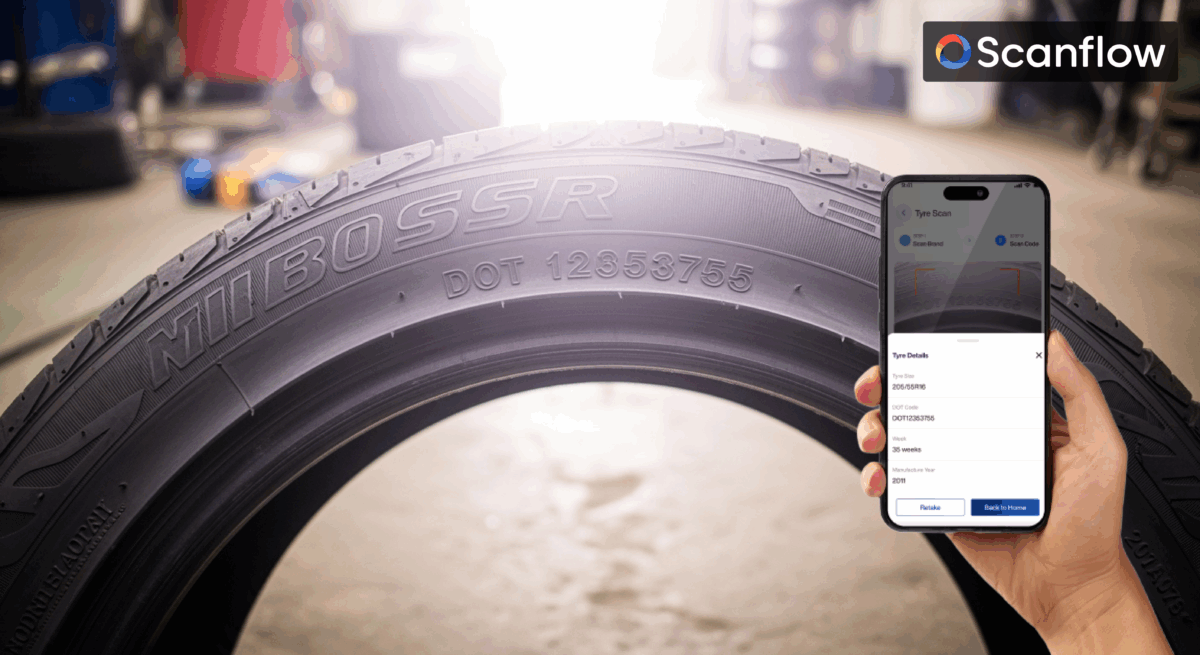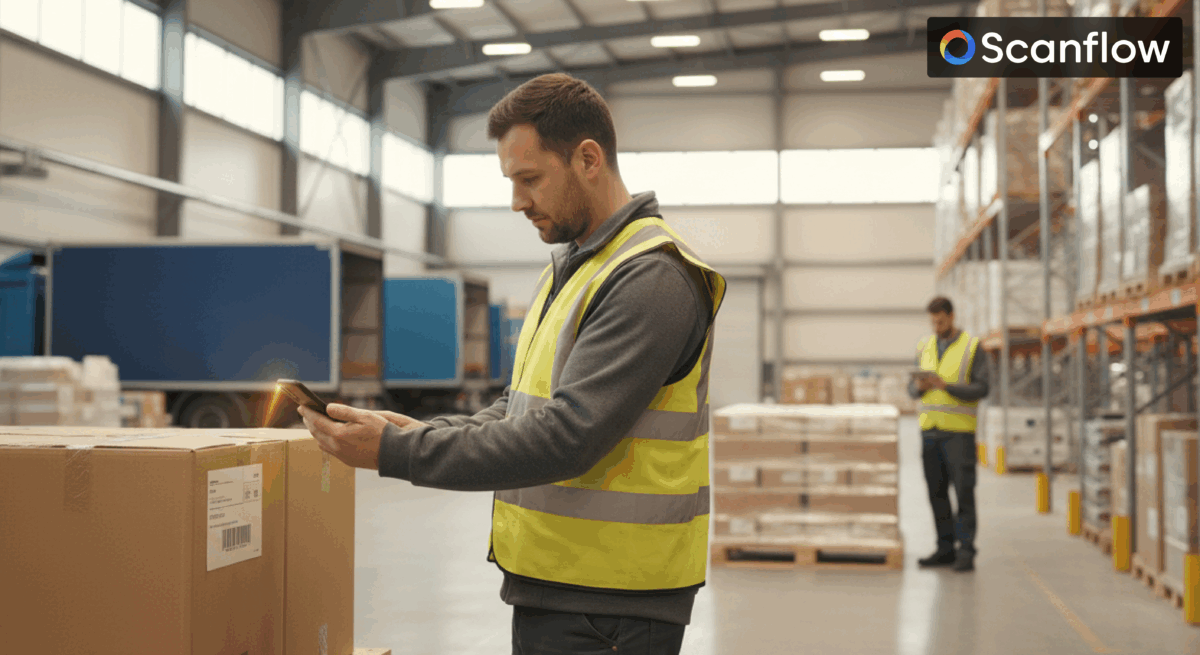Introduction: The Growing Challenge of Tire Traceability
Every year, billions of scrap tires reach the end of their useful life. Managing these tires responsibly is not just an environmental duty but a regulatory requirement in many regions. Yet, one of the biggest challenges facing recyclers and scrap tire handlers is ensuring traceability knowing exactly where each tire came from, its composition, and how it is processed. Traditional manual logging or barcode tagging falls short when handling large volumes or mixed sources.
This is where tire sidewall scanning solutions, like those from Scanflow, are transforming the recycling process. By automating identification through tire sidewall scanners and AI vision models, recyclers can establish a complete digital chain of custody from intake to final processing.
Why Traceability Matters in Tire Recycling
Traceability is critical for both regulatory compliance and operational efficiency.
- Regulatory compliance: Many regions require proof that scrap tires are processed or disposed of safely. Automated traceability reduces errors and ensures transparent reporting.
- Operational insight: Knowing tire types, brands, and conditions helps recyclers separate retreadable tires from shredding-grade ones, optimizing resource use.
- Sustainability and accountability: In a circular economy, data transparency ensures materials are reintroduced responsibly into the production cycle.
Traditional methods manual data entry, stickers, or barcodes can be unreliable. Dirt, wear, or handling conditions often obscure identifiers. An AI-based tire scanner overcomes these challenges with machine vision that reads even worn-out markings.
How AI Tire Scanning Works
Modern tire scanners use high-resolution cameras combined with deep learning models trained to identify and extract text and structural patterns from tire sidewalls.
At Scanflow, the tire sidewall scanner captures key data points such as:
- DOT code / TIN (Tire Identification Number)
- Brand and model
- Size and load index
- Date of manufacture and age
- Stencil numbers and serial details
Once captured, the system automatically validates and stores these details in a digital database. Each scanned tire is assigned a unique digital profile, linking it to subsequent handling steps collection, sorting, shredding, or reuse.
From Intake to Processing: End-to-End Traceability
Let’s break down how AI scanning ensures full traceability across the tire recycling workflow.
1. Intake and Registration
When scrap tires arrive at a facility, they are scanned using AI tire sidewall scanners at the intake point.
The system automatically reads DOT numbers, brand names, and sizes, registering each tire without manual input.
This step replaces paper-based logs and immediately creates a digital record that can be tracked throughout its lifecycle.
2. Sorting and Classification
Once identified, tires are automatically classified using AI algorithms. For example:
- Retread candidates are directed to recovery lines.
- Scrap tires are queued for shredding or pyrolysis.
The scrap tire scanning data helps optimize sorting efficiency while maintaining a verifiable audit trail.
3. Integration with Backend Systems
Scanflow integrates seamlessly with ERP, waste management, or recycling plant software. This allows tire data to sync automatically with operational workflows inventory, logistics, or compliance modules ensuring that the traceability data remains consistent across all systems.
4. Processing and Final Reporting
At each processing stage cutting, shredding, or pyrolysis the tire’s unique ID is maintained. The system logs which tires have been recycled, repurposed, or destroyed.
With a few clicks, facility managers can generate comprehensive traceability reports showing each tire’s journey, satisfying both internal audits and external regulatory requirements.
Key Advantages of Using AI-Based Tire Scanning
Implementing AI-driven tire scanning technology delivers tangible benefits:
- Accuracy and speed
Automated tire sidewall scanners eliminate human error, processing thousands of tires daily with unmatched precision. - Regulatory compliance
Ensures that every tire processed has a verifiable origin and documented disposal method. - Operational transparency
Digital traceability enhances accountability between collection partners, transporters, and recyclers. - Data-driven optimization
Real-time analytics from Scanflow dashboards enable better forecasting, inventory management, and process improvement. - Sustainability alignment
AI-enabled traceability supports circular economy goals by ensuring tires are reused or recycled responsibly.
How Scanflow Leads the Way
Scanflow specializes in intelligent scanning and vision solutions for industrial automation. Its AI tire scanner platform is built specifically for the tire recycling sector, combining advanced image recognition with cloud-based data management.
Some standout features include:
- Edge AI processing for real-time scanning even in rugged environments
- Automatic OCR for DOT/TIN recognition
- Brand and size classification using deep learning models
- Seamless integration with recycling ERP and waste management systems
- Analytics dashboards to track throughput and performance metrics
By automating the entire identification and traceability chain, scanflow helps recyclers reduce manual work, improve accuracy, and ensure full compliance with local and international recycling standards.
Future Outlook: AI-Powered Circular Tire Management
The future of tire recycling will rely heavily on connected data ecosystems. As more facilities adopt scrap tire scanning technologies, it will become possible to share traceability data across regional or global recycling networks.
Imagine a world where every tire has a digital twin accessible through an AI-driven database allowing producers, regulators, and recyclers to collaborate seamlessly toward sustainability goals.
AI-driven tire scanning is not just an efficiency tool. It’s a foundation for transparent, circular, and data-driven waste management.
Conclusion
Traceability is no longer optional in tire recycling it’s essential. AI scanning bridges the gap between manual inefficiency and automated intelligence, making it possible to track every tire from intake to final processing with speed and accuracy.
With its specialized tire sidewall scanner and AI tire recognition system, Scanflow empowers recyclers and scrap tire handlers worldwide to achieve full visibility, regulatory compliance, and sustainability alignment.
As the global circular economy evolves, technologies like scrap tire scanning will play a central role in ensuring that no tire goes untracked and every resource is reused responsibly.

